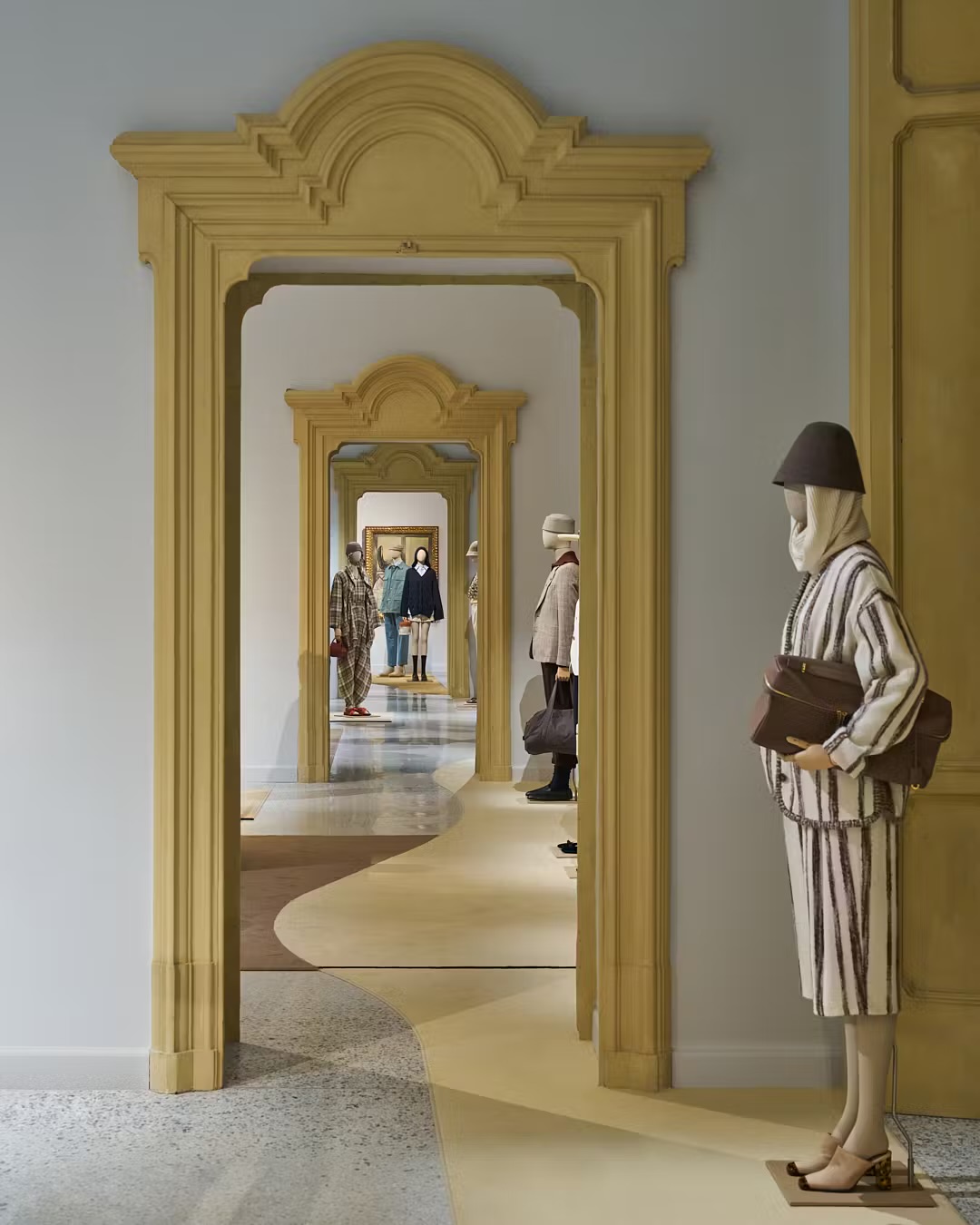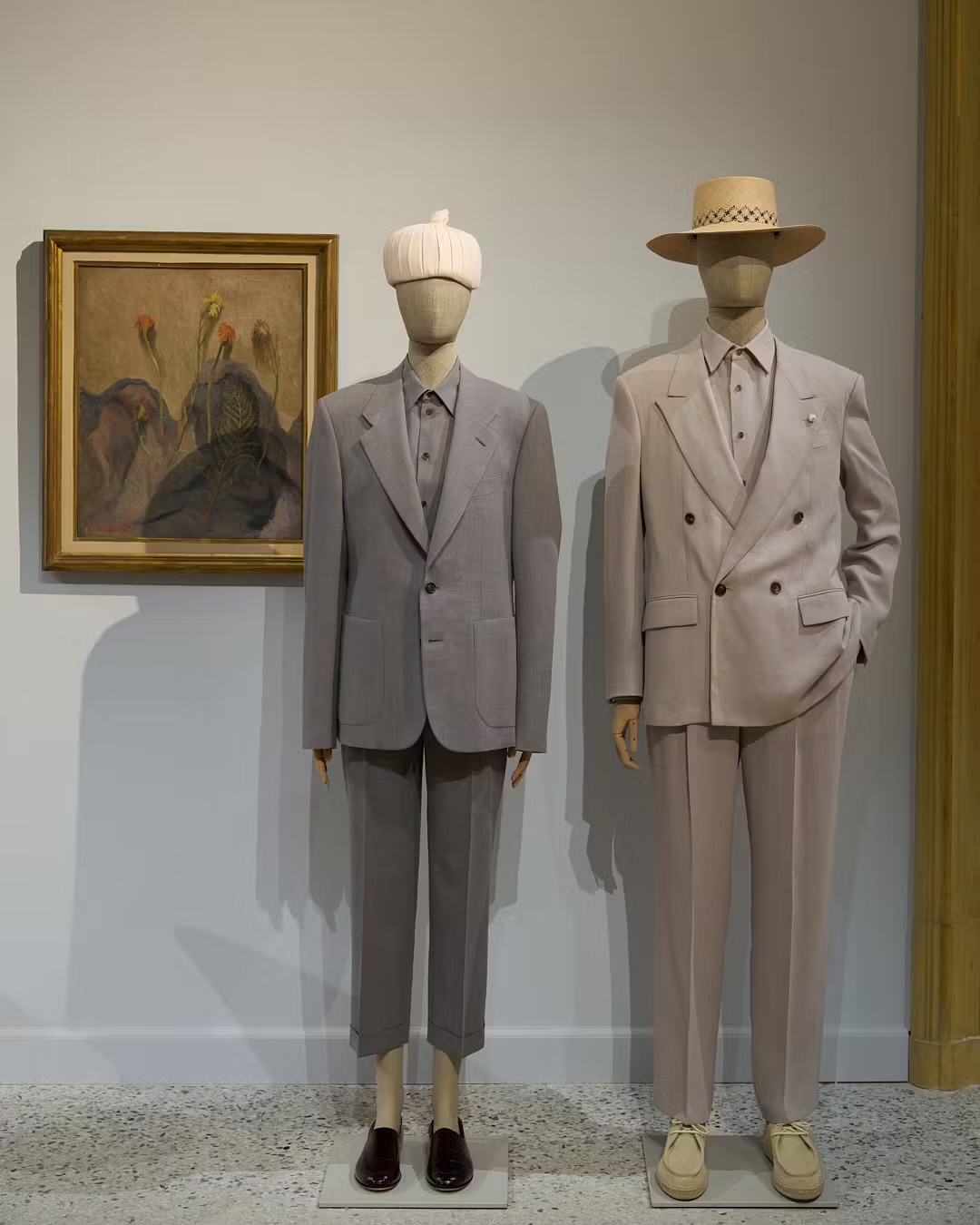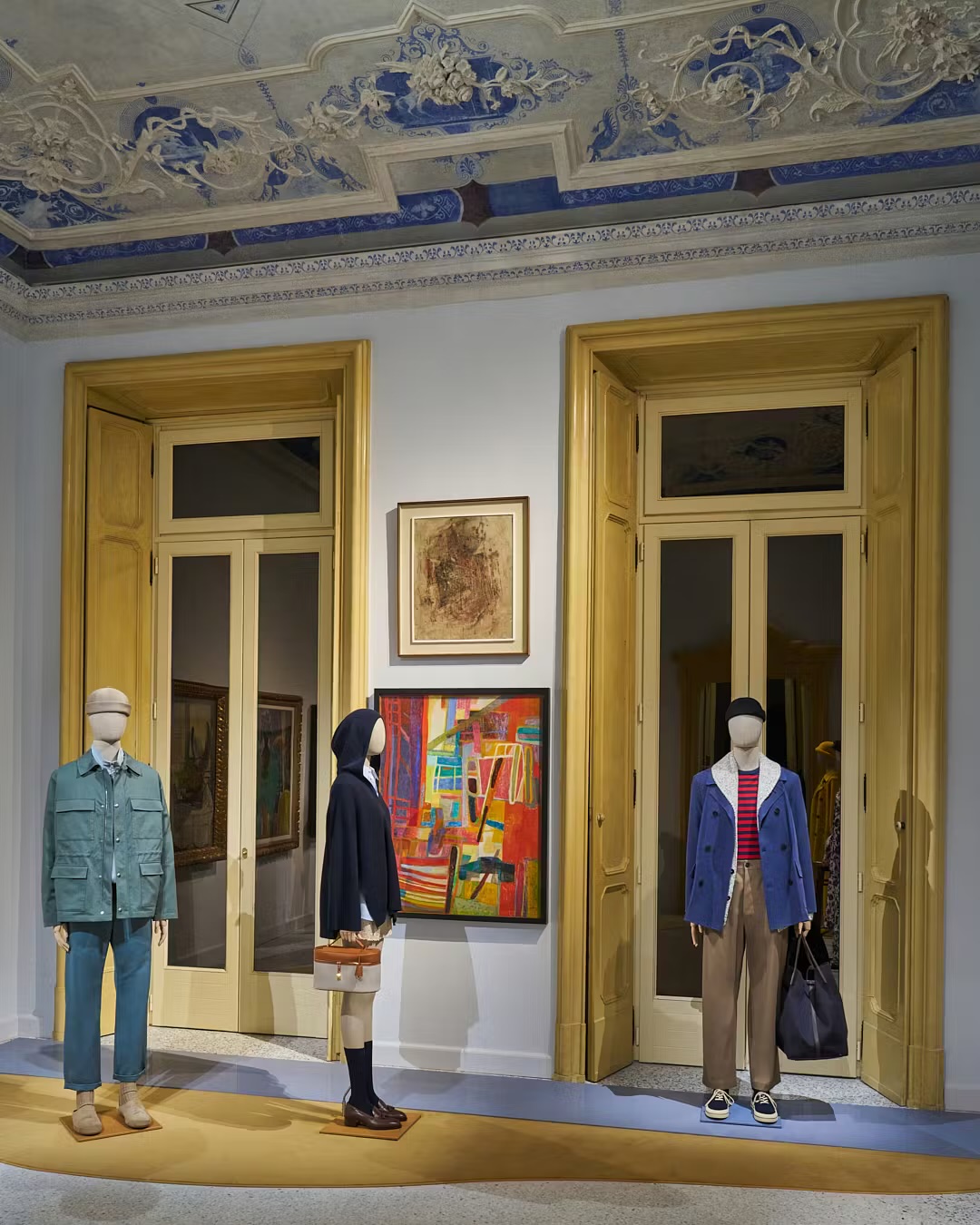Milan Fashion Week often rewards volume. Loro Piana, by instinct and by heritage, prefers quiet. The brand’s Spring/Summer 2026 show at Palazzo Citterio proved there is still power in calm, especially when color is the language. The 18th century palazzo, freshly restored and set as a museum, provided an elegant stage that matters here. Works by Modigliani, Picasso and Morandi framed the runway. The room felt washed in soft daylight, marble cool underfoot, lacquered panels catching a soft glow of reflected tones.
The scenography underscored flow rather than spectacle. Models moved in horizontal lines that felt unforced, like a coastal breeze rather than a storm. Colorful carpets matched the collection’s palette and softened the sound of steps. Mirrored surfaces added a subtle counterpoint that never shouted for attention. Leather goods rested on Italian vintage furniture, the kind of detail that connects contemporary luxury to a domestic past. The message was clear. Loro Piana wanted a conversation between art, architecture and the clothes, not a lecture.

The collection explored a focused spectrum. Sandy neutrals and creams dominated, with controlled hits of red, yellow and turquoise. Nothing neon. Think sun-bleached terracotta, a slice of Amalfi citrus, a bit of sea glass. Women’s pieces included double-faced coats, lighter interpretations of house jackets and weightless dresses. Two new accessories, the Gioia Shopper and the Just Bag, sharpened the silhouette without fuss. For men, everything came back to ease and proportion. Soft blazers that encouraged movement, nonchalant chinos, a few nautical notes that nodded to deck life rather than costume. Bags and footwear grounded the looks, which is to say they felt stable under the color.
The tactile story matters with Loro Piana because material is the brand’s credibility. You could see it in the fall of a double-faced coat and the way a blazer held its line without stiffness. The palette worked because the fabrics were rich enough to carry it. Creams looked luminous under the museum light, not chalky. Turquoise read as mineral, not synthetic. These are small observations, but small things matter to this Maison.

As an experience, the show felt like a guided walk through a designed interior. Carpets marked zones of color that echoed the clothes. Glossy panels and mirrors broke the line of sight just enough to keep you looking. The mood was quiet and assured. If there was a soundtrack, it took a back seat to the acoustics of a grand room smoothed by textiles. Even the placement of accessories on vintage pieces gave a lived-in rhythm, like walking through a collector’s home where the objects are handled, not locked away.
What does this mean for the modern man who actually gets dressed? First, color can be integrated without drama. A soft blazer in cream works with navy and olive. A turquoise knit can sit under neutrals if the tone is mineral and the texture refined. Chinos cut with a measured line become the base, not the headline. The nautical touch has a place, but it should feel like function, not theme. Second, fabric is still the separator. In an era of loud prints, Loro Piana is arguing for quiet complexity. That argument holds.

It also says something about the state of Italian luxury. Milan has increasingly divided into two camps: maximal energy and disciplined restraint. Loro Piana stayed on its side, but allowed more color than usual. That is a smart move. The broader market has grown comfortable with quiet luxury, and the risk of sameness is real. A controlled infusion of color keeps the brand’s identity intact while inviting a new rhythm. It is not a pivot and it does not read as trend-chasing. It is maintenance of relevance.
A note on the women’s accessories. The Gioia Shopper and the Just Bag will likely do well, but even for a male audience they are useful tells. They signal a tightening of lines, a preference for subtle structure over slouch. Expect that language to continue across the men’s leather goods, which already looked purposeful in the line-up.
By the end, Palazzo Citterio had done its work. The light, the art, the measured flow turned a fashion presentation into a cultural placement. Loro Piana reinforced its reputation for fiber and finish, and added a precise dose of color that felt earned. In a season of noise, that kind of control reads as confidence, not caution.
Read more about fashion here.